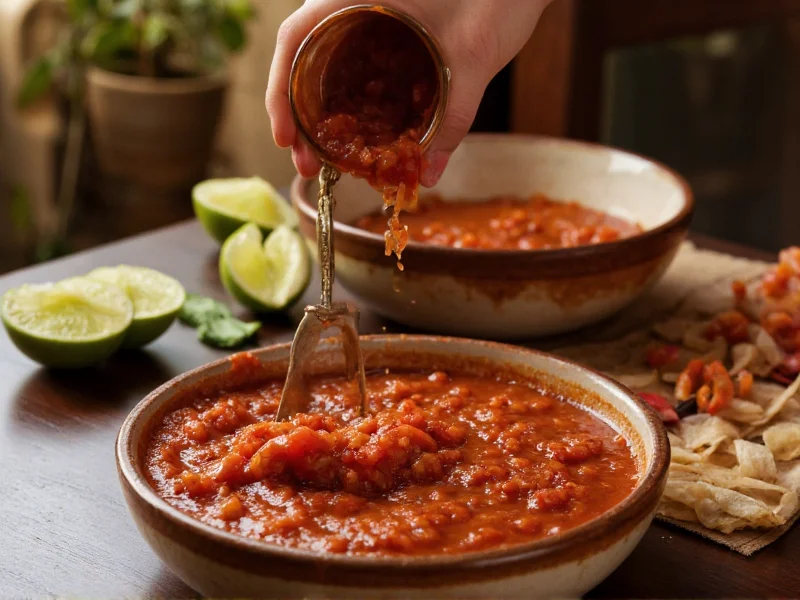Understanding the essence of mojo Cuban sauce requires exploring its cultural roots and practical applications. This versatile marinade represents more than just a condiment—it embodies centuries of culinary tradition that traveled from the Canary Islands to Cuba, evolving into an indispensable element of Cuban cooking. The magic of authentic mojo lies in its perfect balance of acidic citrus, pungent garlic, and warm spices that transform ordinary cuts of meat into extraordinary dishes.
The Cultural Journey of Mojo Sauce
Mojo's story begins with Spanish settlers who brought their mojo sauces from the Canary Islands to Cuba during colonization. The original Canary Island version typically used local malvasía wine, but Cuban cooks adapted the recipe using readily available sour oranges (naranja agria), creating what we now recognize as the distinctive Cuban variation. This culinary adaptation exemplifies how immigrant communities preserve traditions while incorporating local ingredients.
Historically, mojo functioned as both a practical preservation method in Cuba's tropical climate and a flavor enhancer. The acidity from citrus juice helped tenderize tougher cuts of meat while the garlic provided natural antibacterial properties. Today, this sauce remains central to Cuban celebrations, particularly during holidays when families gather to prepare lechón asado, the iconic mojo-marinated roast pork.
Essential Ingredients for Authentic Mojo Cuban Sauce
The power of traditional mojo Cuban sauce comes from its remarkably simple yet perfectly balanced ingredients. Unlike many modern variations that substitute ingredients, authentic preparation relies on specific components that create its signature flavor profile.
| Core Ingredient | Traditional Amount | Function in Mojo Sauce |
|---|---|---|
| Sour orange juice (naranja agria) | 1 cup | Provides distinctive tartness without overwhelming sweetness |
| Fresh garlic cloves | 8-10 cloves | Creates the pungent backbone of authentic mojo |
| Olive oil | 1/2 cup | Carries flavors and helps marinade adhere to meat |
| Cumin | 1 tsp | Adds earthy warmth essential to Cuban flavor profile |
| Dried oregano | 1 tsp | Contributes herbal notes characteristic of Cuban cuisine |
| Salt and pepper | To taste | Enhances overall flavor balance |
Many home cooks make the mistake of substituting regular orange juice for sour orange, but this dramatically alters the flavor profile. When authentic sour oranges aren't available, a mixture of equal parts regular orange juice, lime juice, and lemon juice can approximate the distinctive tartness.
Traditional Mojo Cuban Sauce Recipe
Creating authentic mojo Cuban sauce requires attention to technique as much as ingredients. The traditional preparation method maximizes flavor extraction from each component:
- Peel and roughly chop 8-10 garlic cloves
- Combine garlic with 1 cup sour orange juice in a blender
- Blend until garlic is completely pulverized
- Add 1/2 cup olive oil, 1 teaspoon cumin, 1 teaspoon dried oregano, and salt to taste
- Blend again until emulsified
- Transfer to container and refrigerate for at least 2 hours before use
The resting period allows the garlic flavor to mellow and the spices to fully integrate. For optimal results, use within 3 days when stored in an airtight container in the refrigerator.
Variations Across Cuban Communities
While the basic formula remains consistent, regional and family variations of mojo Cuban sauce reflect Cuba's diverse culinary landscape:
- Havana style: Often includes a splash of dry sherry for added complexity
- Eastern Cuba variations: May incorporate bitter orange leaves for floral notes
- Modern adaptations: Some versions add a touch of honey to balance extreme tartness
- Quick preparation method: Using a mortar and pestle instead of blender for more textured sauce
Understanding these variations helps appreciate how Cuban communities have personalized this traditional sauce while maintaining its essential character. The authentic Cuban mojo sauce for roasted pork remains the gold standard, but these adaptations demonstrate the sauce's versatility.
Practical Applications Beyond Pork
While mojo Cuban sauce traditionally marinates pork for lechón asado, its applications extend across Cuban cuisine:
- As a marinade for chicken before grilling or roasting
- Drizzled over roasted vegetables for added flavor dimension
- Mixed with mayonnaise for a Cuban-style sandwich spread
- Used as a base for salad dressings with additional vinegar
- Poured over cooked black beans for enhanced flavor
When using mojo as a marinade, allow meats to soak for at least 4 hours, preferably overnight. The acid content helps tenderize while the oil carries flavors deep into the meat. For best results with pork shoulder or other tougher cuts, marinate for 24-48 hours.
Common Mistakes to Avoid When Making Mojo
Even experienced cooks can make errors when preparing authentic mojo Cuban sauce. Being aware of these pitfalls ensures optimal results:
- Using pre-minced garlic: Freshly prepared garlic provides superior flavor and texture
- Skipping the resting period: The sauce needs time for flavors to meld properly
- Over-blending: Creates an overly homogenized texture that lacks traditional character
- Using sweet orange juice: Dramatically changes the flavor profile from authentic
- Adding vinegar as substitute: Alters the chemical composition and flavor balance
Remember that authentic Cuban mojo sauce isn't meant to be perfectly smooth. A slightly textured consistency indicates proper preparation and enhances how the sauce adheres to meats during cooking.
Storage and Shelf Life Considerations
Proper storage maintains the vibrant flavor of homemade mojo Cuban sauce. When stored in an airtight container in the refrigerator, fresh mojo keeps for 3-4 days. The garlic flavor intensifies over time, so many Cuban cooks prefer to make it one day in advance.
For longer preservation, freeze mojo in ice cube trays, then transfer the frozen cubes to airtight bags. Properly frozen, the sauce maintains quality for up to 3 months. Thaw overnight in the refrigerator before use. Never leave mojo at room temperature for more than 2 hours due to the raw garlic content.











 浙公网安备
33010002000092号
浙公网安备
33010002000092号 浙B2-20120091-4
浙B2-20120091-4